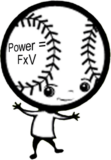Free-For-All Articles To Improve Your Pitching
Brain Food for You
Everyone has questions about pitching…and science has the answers. Enjoy the articles and the monthly “on the hill with Angel”. The information will enhance your knowledge base as well as serve as a stimulus to your own creative thought. If professionals and coaches team-up, I know we can make a difference in keeping our pitchers injury-free and throwing hard!
Often times pitchers complain of soreness in their forearm and elbow region. There are many possible causes of this type of issue but one cause that is easy to spot is improper follow-through arm mechanics, i.e., what the arm does immediately following ball release. The mechanics of the pitching arm during this phase of the pitching motion are more important to the health of the forearm and elbow than one would think. Proper follow-through is essential to avoiding forearm tightness and upper arm soreness.
First: Do four to five sets of 20 repetitions of external rotation for the rotator cuff at least five days a week. Use the style that keeps the arm by your side… standing with lightweight tubing… or lying on your side with a 3# dumbbell; the light weight ensures not recruiting other muscles. Research has shown this protocol to produce amazing results.
Second: Check your forearm regularly for range of motion… especially if you throw a cutter, split-finger, or curve ball. This will help prevent…
If you are a pitcher…or a father or coach of a pitcher…your off-season checklist is another list that should not be overlooked. The weeks before practices and games resume are your most precious weeks and should be used wisely. It’s never too late to start…so if you have forgotten something, get started now! Off-season should be about repair, wise use of off-season time, and planning for the next season.
Elbow injuries are at epidemic proportions, especially among the younger pitcher. And while no one can predict or control the effects of wear and tear, there are many things that you can do right now to take control of your elbow health and know that you are doing everything within your power to protect this very vulnerable joint.
Why is the elbow so vulnerable?
The elbow, forearm, and wrist are the final receivers of the forces that are summated from the ground and your lower body and trunk. The forces generated are actually greater than what the elbow joint and its ligamentous structures are designed to withstand. The muscular structures surrounding the joint…
